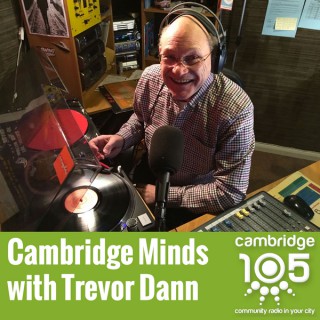Podcasts about hamilton kerr institute
- 5PODCASTS
- 7EPISODES
- 28mAVG DURATION
- ?INFREQUENT EPISODES
- May 5, 2016LATEST
POPULARITY
Latest podcast episodes about hamilton kerr institute
Christine Slottved Kimbriel (Assistant to the Director, Hamilton Kerr Institute, Cambridge)
Spike Bucklow (Senior Research Scientist and Teacher of Theory, Hamilton Kerr Institute, Fitzwilliam Museum, Cambridge)
Trevor Dann meets two more of Cambridge’s thinkers. Trish Sheil from the Arts Picturehouse is Education Officer for the Cambridgeshire Film Consortium and a guest lecturer in film studies at Anglia Ruskin University. Art historian Rupert Featherstone is director of the Hamilton Kerr Institute, assistant director of conservation for the Fitzwilliam Museum and a regular […]
http://www.cam.ac.uk/research/news/whale-tale-a-dutch-seascape-and-its-lost-leviathan Earlier this year a conservator at the Hamilton Kerr Institute made a surprising discovery while working on a painting owned by the Fitzwilliam Museum. As Shan Kuang removed the old varnish from the surface, she revealed the whale that had been the intended focus of the scene. In 1873 the Fitzwilliam Museum, Cambridge, was given a number of Dutch landscape paintings by a benefactor called Richard Kerrick. Among these works of art was a beach scene painted by the artist Hendrick van Anthonissen early in the 17th century. Anthonissen depicts groups of people clustered on a sandy beach at the small town of Scheveningen. Other figures stand on the cliffs and, on the shore, several boats have been pulled up on the sand. http://www.cam.ac.uk/research/news/whale-tale-a-dutch-seascape-and-its-lost-leviathan
Reconstructing Things: From Colourful Clothes to Paintings and Pigments Professor Ulinka Rublack (Professor of Early Modern European History, Faculty of History, St John's College, University of Cambridge) Dr Spike Bucklow (Senior Research Scientist and Teacher of Theory, Hamilton Kerr Institute, Fitzwilliam Museum, Cambridge) NB This session will be on Thursday at 1.30pm Abstracts Prof Rublack: How can historians reconstruct the symbolic as well as sensate world of colour experience? This talk introduces the audience to a unique experiment in reconstruction. It focuses on the political and emotional meanings of yellow and red in a precise moment in time: the Augsburg Imperial Diet in 1530, one of the key political summits of the German Reformation. It uses contemporary evidence to demonstrates in detail why symbolic languages were so crucial and contested at these meetings, but also uses research on the Fugger merchant company to show that their political outcomes were underpinned by very real financial strategies and economic interests. The paper then concentrates on an explanation of why the head-accountant of the company chose to commission a particular outfit to wear during the summit and shows how an actual reconstruction of historical dress can enrich our knowledge of the past and epistemological approaches. Dr Bucklow: This paper follows Ulinka's focus on colour and reinforces her suggestion that the reconstruction of things can throw light on aspects of culture that might otherwise remain inaccessible. It recognises that things like colour are intimately linked to material substrates that carry them - dyes in cloth, or pigment in paint, for example. It suggests that, up to and including the nineteenth century, some of the cultural significance of colours was linked to the dyes and pigments that provided them. The paper explores the re-enactment of studio practice based on historic artists' recipes, acknowledging the role of tacit knowledge alongside explicit instructions. With reference to a fourteenth-century Missal in the Fitzwilliam Museum, the reconstruction of two blue pigments using contemporary methods shows that there is more to a colour than meets the eye.
Continuing from our podcast Restoring the Masters, Sally Woodcock, a PhD student from the Hamilton Kerr Institute talks about how we restore old oil paintings to their former glory. Like this podcast? Please help us by supporting the Naked Scientists
Touching Up On Art Restoration
Continuing from our podcast Restoring the Masters, Sally Woodcock, a PhD student from the Hamilton Kerr Institute talks about how we restore old oil paintings to their former glory. Like this podcast? Please help us by supporting the Naked Scientists








